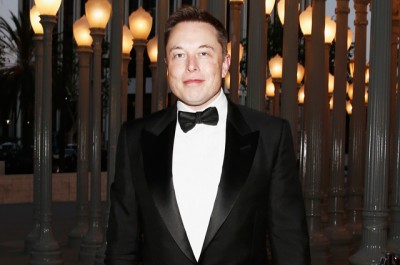
Elon Musk has announced big, albeit confusing, plans for Twitter since he took over the social network last month.
Musk wants to vastly increase the revenue the company makes through subscriptions while opening up the site to more “free speech,” which in some cases seems to mean restoring previously banned accounts like the one owned by former president Donald Trump.
But Musk’s plans for Twitter could put it in conflict with two of the biggest tech companies: Apple and Google.
Tensions are brewing
One of the biggest risks to Musk’s vision for “Twitter 2.0” is the possibility that his changes violate Apple
or Google’s
app rules in a way that slows down the company or even gets its software booted from app stores.
Tensions are already brewing. Musk complained in a tweet just last week about app store fees that Google and Apple charge companies like Twitter.
“App store fees are obviously too high due to the iOS/Android duopoly,” Musk tweeted. “It is a hidden 30% tax on the Internet.” In a follow-up post, he tagged the Department of Justice’s antitrust division, which is reportedly investigating app store rules.
His complaint is over the 15% to 30% cut Apple and Google take from purchases made inside apps, which could eat into the desperately-needed revenue from Musk’s plans for $8 per month from Twitter Blue subscriptions.
Over the weekend, Phil Schiller, the former head Apple marketing executive who still oversees the App Store, apparently deleted his widely-followed Twitter account with hundreds of thousands of followers.
There are signs Twitter has already seen an increase in harmful content since Musk has taken over, putting the company’s apps at risk. In October, shortly after Musk became “chief Twit,” a wave of online trolls and bigots flooded the site with hate speech and racist epithets.
The trolls organized on 4chan, then barreled into Twitter with anti-Black and Jewish epithets. Twitter suspended many of the accounts, according to the nonprofit Network Contagion Research Institute.
Musk’s plan to offer paid blue verification badges have also led to chaos and accounts impersonating major corporations and figures, which have caused some advertisers to shy away from the social network, in particular, Eli Lilly after a fake verified tweet erroneously said insulin would be provided for free.
The app stores noticed.
“And as I departed the company, the calls from the app review teams had already begun,” former Twitter head of trust and safety Yoel Roth wrote this month in the New York Times.
Fees and subscription revenue
Twitter and Apple have been partners for years. In 2011, Apple deeply integrated tweets into its iOS operating system. Tweets that function as official company communications are regularly posted under Apple CEO Tim Cook’s account. Apple has advertised new iPhones and its big launch events on Twitter.
But the relationship appears poised to change as Musk moves to generate a larger bulk of income from subscriptions.
Twitter reported $5.08 billion in revenue in 2021. If half of that comes from subscriptions in the future, as Musk has said is the goal, hundreds of millions of dollars would end up going to Apple and Google — a small amount for them, but a potentially massive hit for Twitter.
One of Apple’s main rules is that digital content — game coins, or an avatar’s outfit, or a premium subscription— that’s purchased inside an iPhone app, has to use Apple’s in-app purchasing mechanism, in which Apple bills the user directly. Apple takes 30% of sales, decreasing to 15% after a year for subscriptions, and pays the remainder to the developer.
Companies such as Epic Games, Spotify
, and Match Group lobby against Apple and Google’s rules as part of the Coalition for App Fairness. Microsoft and Meta
have also filed briefs in court criticizing the system and made public remarks aimed at app stores.
One option for Musk is to take an approach similar to what Spotify has done: Offer a lower $9.99 price on the web, where it doesn’t pay Apple a cut, and then users simply log in to their existing account inside the app. Users subscribing to a Premium subscription inside the iPhone app pay $12.99, effectively covering Apple’s fees.
Or Twitter could go further, like Netflix, which stopped offering subscriptions through Apple entirely in 2018.
Musk could sell Twitter Blue on the company’s website at a cheaper price and tweet to his over 118 million followers that Blue is only available on Twitter.com. It might work and could help cut Apple out of any fees.
But that also means Twitter would have to remove many options for informing users about the subscription inside the app, where they’re most likely to make a purchasing decision. And Apple has detailed rules about what apps can link to when telling users about alternative ways to pay.
As Netflix’s app says: “You can’t sign up for Netflix in the app. We know it’s a hassle.”
Leave a Reply